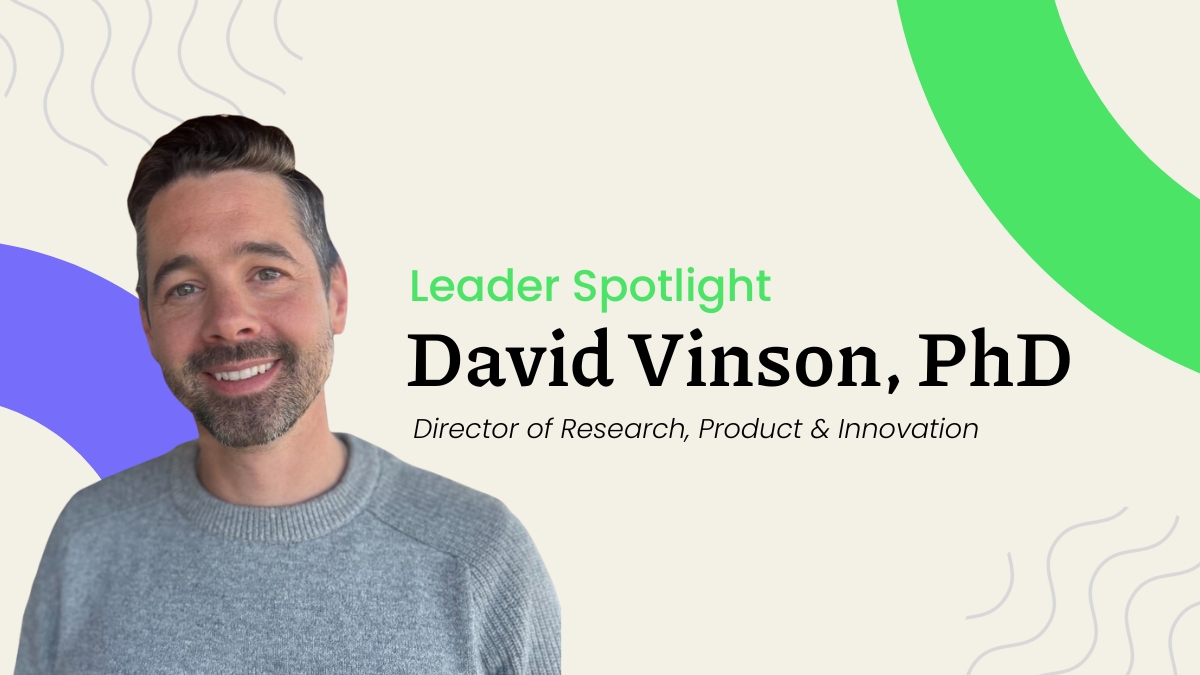Enhancing Customer and Employee Experiences With Human-Machine Teaming
-
IntouchCX Team
- June 15, 2023

Introduction
David Vinson is the Director of Research for IntouchCX. He has over six years of industry research and experimental development (R&D) experience with a focus on developing and implementing intelligent technology solutions for customer and employee success. David is currently focused on developing, implementing, and analyzing the impacts of technology solutions that enable the symbiotic relationship between humans and machines.
Read on to learn more about David’s perspective on how technology and cognitive science play a role in employee experience (EX) and customer experience (CX), and what the future holds as humans and machines become more intertwined than ever before.
How is technology changing the employee experience (EX) today? What can we expect for the future of EX?
Wild. It’s wild! There is so much rapidly evolving technology and ways to apply it we have never considered before. That is the very premise of many of the projects we are researching at IntouchNXT. Findings in neuroscience can now be used to understand how we engage and react in our day-to-day working environment. Applications in communication science are helping us build better relationships between agents and machine technology. AI-enabled support systems like Superpunch Care, which we’re evolving in-house, have the capacity to elevate and influence all parts of both customer and employee journeys.
All of this is positive. We’re talking about increasing employee capabilities, which, in turn, elevates the customer experience. Consider the idea of a customer’s voice being imported into a generative AI system and in seconds it can spit out exactly the right way to phrase a specific answer to any client. This is happening right now, creating a completely new context by which we consider what “work” means for customer service employees. And this is just the beginning.
The constraints of needing to look up policies to address customer concerns leave no time to focus on the customer experience. This limits our ability to do what we do best: be cognitively flexible to address what it means to be talking to a human–to be understood. All of a sudden, employees are not policy-relay help desks but part of the flow of the experience itself, smoothing out its peaks and troughs.
Advancements in AI are creating space for us to be the experts we’ve always been and to use our cognitive abilities to do things like make contextually grounded decisions and selectively respond. Humans are incredibly adaptable with the unique ability to relay our understanding of each other. When harnessed in the right way, AI can be an extremely powerful tool to elevate our experiences with one another.
“Recent advancements and accessibility to tools and data in the fields of cognitive, neuro-, and computer science are proving more and more capable of providing us with an elevated understanding of human experiences.”
The customer experience is critical to every business. How can science and technology help us better understand the customer and deliver exceptional experiences?
Similar to technology, new ways in which we quantify behavior provide new avenues for considering precisely how we think and feel in the moment. Recent scientific methods are closing the gap between moments of experience and how we understand their effects.
Up until now, we have relied on self-reporting tools like surveys, focus groups, interviews, and more to give us insight into programmatic changes needed to facilitate work. These methods provide us with a self-reflection of how we feel about our own experiences–but they do so well after the experience has been iterated on and codified in the mind. Sometimes, how we feel isn’t even something we consider until someone asks us about it, but that doesn’t mean our feelings aren’t impacting our decision making. Our understanding is only as good as the limitations of our tools.
Recent advancements at the intersection of technology, research, and industry allow us to do things like leverage neuroscience insights through technology to better understand the impact of experiences in real-time with real people doing real things. Neuromonitoring done through something as simple as a heart rate sensor allows us to detect changes in the brain as they relate to your engagement.
Other technology, such as our custom-built AI algorithms, advances our ability to detect minute behavioral changes in things like stress levels. This allows us to elevate one’s experience by closing the loop between moments of stress and curated, individualized well-being information. It’s these recent advancements and accessibility to tools and data in the fields of cognitive, neuro-, and computer science that are proving more and more capable of providing us with an elevated understanding of human experiences.
Humans and machines working together is not new. Why are we hearing about it today more than ever?
Consider the history of technology. Using tools allows us to interact with the world at a distance. Wearing glasses might be seen as the birth of being cyborgs. But we never hear about it like this. What’s a pacemaker besides a technology device used to restart your biological heart when it stops? Why are we all of sudden thinking about “machines” any differently than we would any other groundbreaking innovation? The difference is that we have not successfully adapted the technology to seamlessly elevate our experiences…yet.
When technology is seamlessly integrated, you forget the technology exists at all. What I mean is, you don’t experience the glasses sitting on your face. What you experience is simply an elevated visual experience. The difference between these older technology innovations and current ones is having had the time to optimize their integration. If we want to successfully implement powerful new technologies to elevate work, it’s time for cognitive and behavioral design to catch up.
We are talking about human-machine teaming (HMT) because we’re just beginning to learn how these developments can shape experiences, and eventually become integral to experience itself. Just like wearing glasses, good designs allow us to forget they are there. That being said, there are countless design failures where technology has not been adopted as a result of its design implementation. We’re at this stage right now. I expect there to be a number of ways in which we might integrate certain technologies. Not all of them will be good, but some of them might be truly beautiful.
Soon enough, seamless “human + machine” design will catch up to the new technology and we’ll feel the same way we do about glasses: “I can’t see without them.” At that point, the technology will be wholly integrated into our very own perspective of what we call the self.
“We are starting to consider how to seamlessly integrate sophisticated AI machines into our everyday experiences. The technology is there. Designing it for human experience is the next step.”
Where can we go to learn more about these fascinating topics?
Great question. At IntouchNXT, we are leading the field with emerging technology, AI, and behavioral science to co-create new solutions to old and emerging problems. We lead from the future to revolutionize experiences, so we continually research bluesky concepts and consider how we might apply them to our world of CX and EX.
Right now we have evolved bluesky concepts into everyday technology products in our business. New innovations like generative AI and neuromonitoring improve mental health screenings, redesign remote work schedules, and enhance well-being for agents. Human-machine teaming allows us to better serve human needs, leading to a more sustainable work environment while enabling us to work more efficiently. This is just scratching the surface, as there is much more to unpack with these innovations.
What are you most excited about in the next 6-12 months?
Doing it well. We are starting to consider how to seamlessly integrate sophisticated AI machines into our everyday experiences. The technology is there. Designing it for human experience is the next step.
I’m excited for the moment when we stop talking about “human + machine” teaming. People might ask, “But why? Isn’t that, like, what you DO?” Well yeah, but I want to do it well. And that means finding an effective way to integrate it into our daily lives and forgetting we’re doing it at all. I’m excited about the future when we will have to ask questions like, “Do you wear contact lenses?” The very moment that asking the question is required to understand if someone is using technology to elevate their experience is what I call a phenomenological breakthrough.















